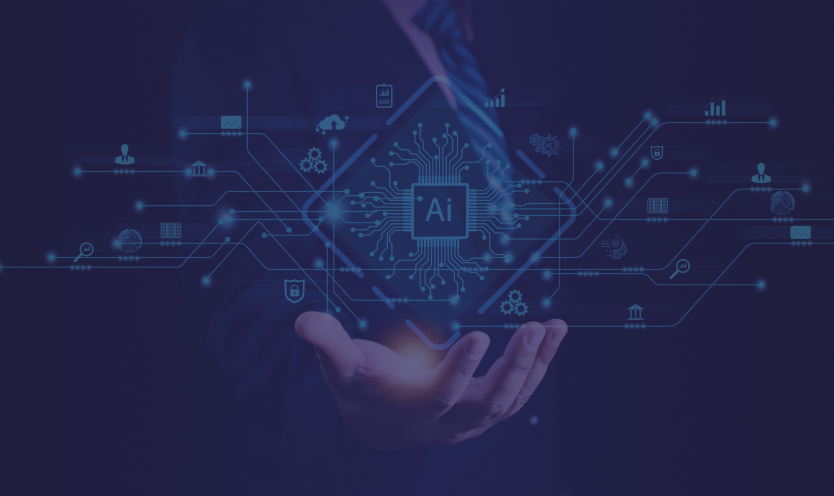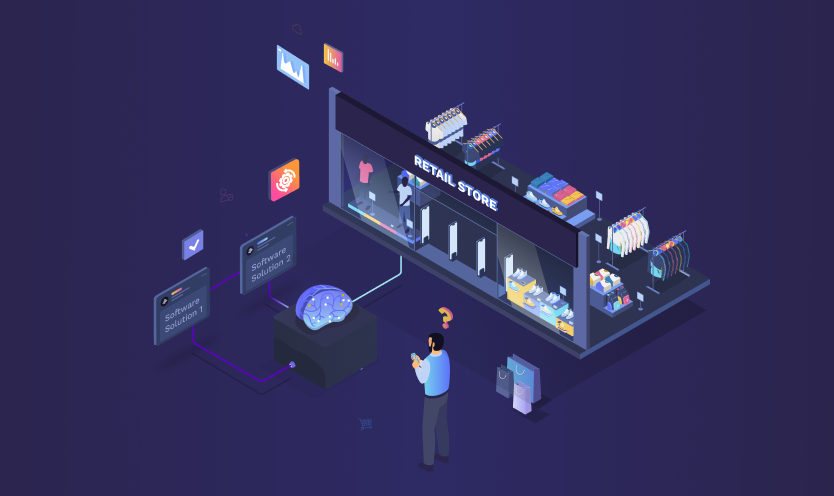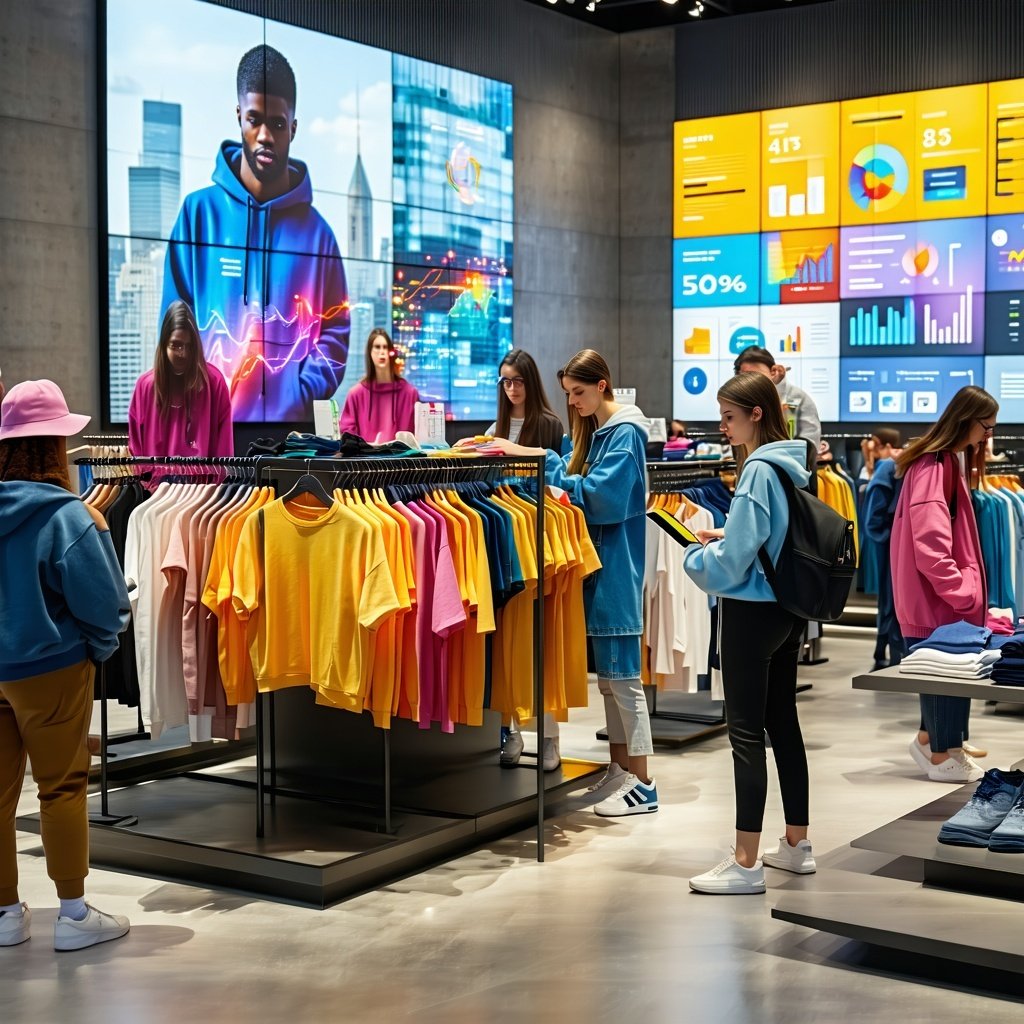Hybrid Commerce: Where eCommerce Meets Retail
Hybrid Commerce: Where eCommerce Meets Retail
Both physical retail stores and online shops offer unique benefits for buyers and sellers.
Today’s retailers are learning to adapt to changing consumer spending behavior by blending the strengths of brick-and-mortar retail with the benefits of online ecommerce. This fusion of sales channels, known as “hybrid commerce,” could be the next game changer for your company.
Hybrid solutions harness the best parts of retail and ecommerce. In other words, hybrid commerce lets you enjoy the best of both worlds.
But what specific benefits of physical retail and online ecommerce are hybrid solutions seeking to blend? And what are the downsides to retail and ecommerce that hybrid solutions can help you avoid?
This guide will cover the pros and cons of both retail and ecommerce sales, then explain how omnichannel hybrid commerce combines the strengths of each channel while circumventing some of their weaknesses.
Key Takeaways:
- Retail and ecommerce have their own strengths and weaknesses that businesses should be aware of.
- Hybrid commerce bridges the gap between channels.
- The omnichannel approach to hybrid commerce integrates various sales channels.
Retail: Pros and Cons
For most of the history of commerce, physical transactions have been the default. Today, while brick and mortar retail doesn’t have the monopoly it used to, it still offers important benefits:
- Sensory experience: While ecommerce promises convenience, it can’t replicate the sensory experience of in-person shopping. This sensory richness is especially important for high-sensory products like clothing or décor, as well as premium products like electronics and appliances.
- Impulse sales: Post-COVID-19, impulse spending is continuing to rise. While this growth is largely fueled by ecommerce, about two-thirds of impulse purchases still occur in person at brick-and-mortar retailers.
- Immediacy: One of the primary reasons consumers continue shopping at physical retailers (even when digital alternatives exist) is the immediacy of taking home a product as soon as they buy it. This convenience is a major benefit of physical retail.

However, retail also has its downsides:
- Limited geographical reach: While some ecommerce companies ship worldwide, physical retailers are limited to their immediate vicinity. This limitation significantly reduces their potential customer base from the seven billion people worldwide to a much smaller number of consumers willing to physically travel to their geographical area.
- Less data. Modern tools like tech-enabled point of sale (POS) systems and Wi-Fi/beacon technology that tracks customer movement through retail spaces are helping retailers collect and use more data than ever. However, these advances in retail data still don’t compare with the robust data stack available to ecommerce platforms.
eCommerce: Pros and Cons
Powered by the internet and fueled by data analytics, ecommerce has seen a meteoric rise in recent decades, accounting for around 20% of all retail sales. That percentage is expected to rise as the industry is projected to grow by $600 billion each year.
Here are some reasons why businesses and consumers alike are turning to ecommerce to buy and sell products in 2023:
- Convenience: While brick-and-mortar stores offer immediacy, ecommerce platforms offer around-the-clock availability and the option for consumers to shop without leaving their homes. Additionally, ecommerce customers enjoy a wider selection of goods and services, adding to the convenience factor for buyers.
- Rich data: The success of mega-corporations like Google and Meta isn’t in their product alone but also in their data. eCommerce is an ideal platform for collecting and analyzing data, which retailers can then use to manage inventory, track spending patterns, and integrate with CRM software.
- Pricing tools: Smart pricing strategies are key in the digital age, but brick-and-mortar retailers have limited options. eCommerce companies can use personalized, dynamic, and targeted pricing strategies to find the ideal price point for each product.
However, ecommerce also has its limitations:
- Limited sensory experiences: Online customers can view your products anytime, anywhere, but they miss out on the immersive experience of in-person shopping.
- Shipping costs and delays: While ecommerce sellers can save on physical retail space costs, they still deliver products to customers. While this shipping expense may seem minor compared to the cost of shipping products from distribution centers to physical stores, last-mile delivery makes up over half of all shipping costs. Additionally, even expedited shipping or same-day delivery results in some delay between a customer’s purchase and their receipt of the product.
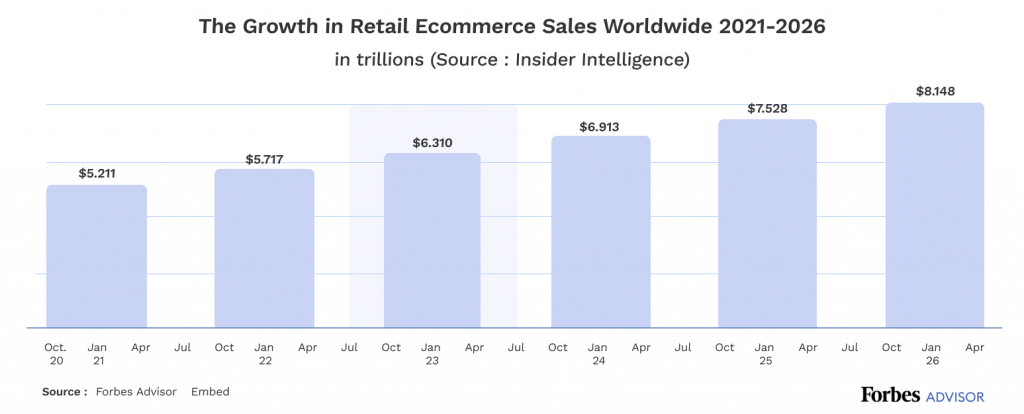
Omni-Channel Approaches Deliver the Best of Both Worlds
Retail and ecommerce each have their unique strengths and weaknesses, but which one is best?
Thankfully, you no longer need to make that choice.
Modern businesses don’t have to choose between retail and ecommerce channels. Omnichannel hybrid commerce seamlessly bridges the gaps between both worlds.
The term “omni” means “all,” and an omnichannel approach seeks to seamlessly integrate physical retail spaces, online ecommerce shops, mobile apps, and social media accounts. In an omnichannel approach, a business operates as a unified entity across multiple channels. Contrasted with a multi-channel approach that treats each channel as its own entity, omnichannel approaches bring consistency and cohesiveness to growing companies.
Channel Integration
Toys “R” Us, Borders, RadioShack, and Blockbuster. Besides being some of the highest-profile bankruptcies of the 2010s, these four businesses share another commonality: they failed to integrate digital channels with their physical retail operation.
While these multi-channel companies each failed for their own reasons, we can trace much of their struggle to stay afloat directly back to their lack of channel integration. The key difference between an omnichannel and multi-channel approach is that the omnichannel philosophy integrates channels with each other into a larger operational entity.
Channel integration enables businesses to ameliorate the downsides of various channels. For example, the sensory richness that ecommerce lacks can be addressed by physical retail presence, and the limited geographical reach of retail can be augmented by ecommerce integration.
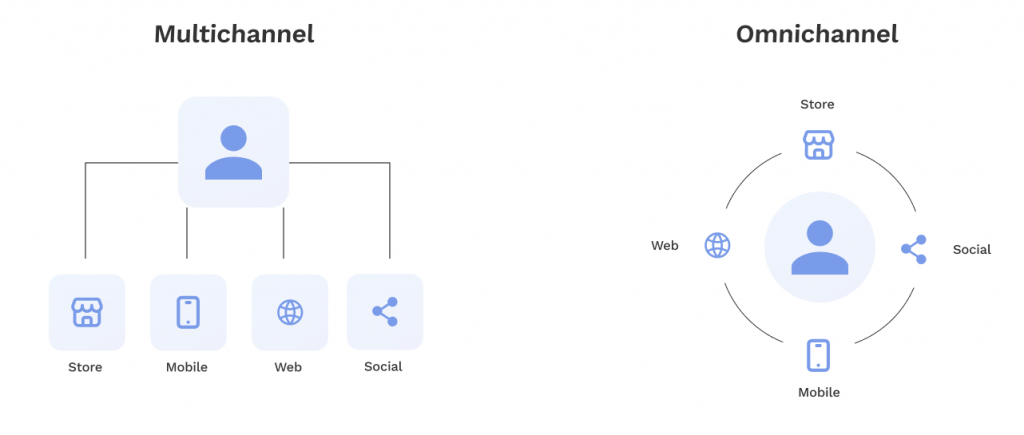
Unified Customer Experiences
For each cautionary tale, there is an aspirational story to match it. Walmart is perhaps the most significant success story in omnichannel integration, with their online ordering and mobile order pickup cementing their place as not only a top retailer but also a top ecommerce site.
The same applies to Target’s acquisition of same-day delivery company Shipt, or Amazon’s acquisition of health food giant Whole Foods—integrated channels lead to unified experiences, and unified experiences lead to happy customers.
In practice, a unified customer experience means that your customers have a consistent experience whether they’re interacting with your brand on social media, purchasing items online or from a mobile app, or walking into your store. This means your branding, messaging, and values must be consistent across channels, and you should strive to remove as many barriers as possible for customers to cross those channels.
For example, McDonald’s mobile app fosters a unified customer experience through consistent branding, but it also facilitates easy channel crossing for their customers. Interactions in the app are communicated to the physical store that prepares the customers’ food. So, when customers place mobile orders for in-store pickup, they never feel like they’re dealing with two separate entities (although that is technically the case). Rather, they enjoy a seamless experience from website to app to store.
Hybrid Commerce with Hypersonix
Whether you’re a retailer looking to expand into ecommerce, an ecommerce company ready to branch into physical storefronts, or an omnichannel company that simply wants to optimize your profits, Hypersonix can help.
Hypersonix’s ProfitGPT profit optimization platform enables businesses to manage inventory, analyze data, and intelligently implement optimal pricing strategies. To accomplish this, Hypersonix uses state-of-the-art generative AI technology that is designed for all facets of profit optimization.
Request a personalized demo today to see how omnichannel hybrid commerce can work for you.
